Frankia: Difference between revisions
No edit summary |
No edit summary |
||
| Line 1: | Line 1: | ||
{{Biorealm}} | {{Biorealm Genus}} | ||
[[Image:frankia_sp.jpg|frame|right|''Frankia ''sp. From [http://www.genoscope.cns.fr/externe/English/Projets/Projet_HF/organisme_HF.html Genoscope.]]] | [[Image:frankia_sp.jpg|frame|right|''Frankia ''sp. From [http://www.genoscope.cns.fr/externe/English/Projets/Projet_HF/organisme_HF.html Genoscope.]]] | ||
| Line 14: | Line 10: | ||
===Species:=== | ===Species:=== | ||
{| | |||
| height="10" bgcolor="#FFDF95" | | |||
'''NCBI: [http://www.ncbi.nlm.nih.gov/Taxonomy/Browser/wwwtax.cgi?mode=Info&id=1854&lvl=3&lin=f&keep=1&srchmode=1&unlock Taxonomy] Genome ''' | |||
|} | |||
''Frankia alni; Frankia'' sp. | ''Frankia alni; Frankia'' sp. | ||
Revision as of 19:10, 15 August 2006
A Microbial Biorealm page on the genus Frankia
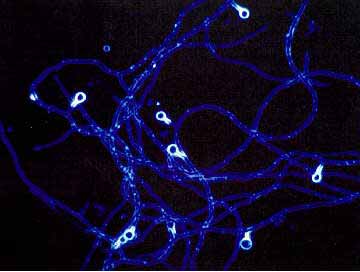
Classification
Higher order taxa:
Bacteria; Actinobacteria; Actinobacteria (class); Actinobacteridae; Actinomycetales; Frankineae; Frankiaceae
Species:
|
NCBI: Taxonomy Genome |
Frankia alni; Frankia sp.
Description and Significance
Frankia is a nitrogen-fixing bacterium that lives in the soil and has a symbiotic relationship with many plants.
Genome Structure
Genoscope, the CNRS, and University of Lyon began in October of 2003 on a Frankia squencing project. They are sequencing the Frankia alni ACN14a genome and compare it to other Actinobacteria. Their goal is to gain more knowledge on the mechanisms behind Frankia's symbiotic relationships. Currently there are three projects taking place at the DOE Joint Genome Institute, two are in the draft assembly stage and one is in progress. Frankia sp. Mbj2, Frankia sp. EAN1pec, Frankia sp. CcI3 are the three species (click on links to view infromation through NCBI).
Cell Structure and Metabolism
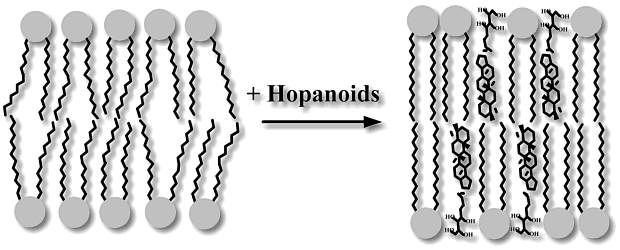
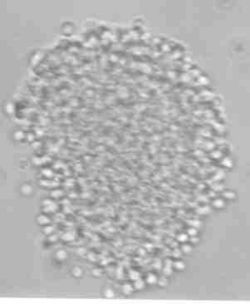
Frankia are Gram-positive, aerobic, nitrogen-fixing bacteria. The membranes of Frankia, as well as the membranes of some other bacteria like Bradyrhizobium, Rhizobium, and Streptomyces, contain lipid components called hopanoids. Hopanoids, which are amphiphilic, pentacylic triterpenoid lipids, condense membrane lipids therefore stabilizing the membranes in a similar way to which sterols do in higher organisms. There are many structural variants of hopanoids like polyol- and glyco-derivatives that can be found within various bacteria; the specific functions of each hopanoid derivative have not been found. Some people hypothesize that hopanoids may have more refined functions than just membrane stabilizing. In Frankia specifically, membranes containing hopanoids surround vesicles called diazovesicles that contain nitrogenase, an oxygen-sensitive enzyme. While hopaniods thicken and stabilize the walls which help to keep oxygen away from the nitrogenase, some suggest that the hopanoids themselves play a more specific and molecular role in the oxygen protection mechanism of nitrogenase.
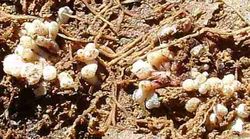
Frankia (both Frankia that lives in a symbiotic relationship with plants and free-living Frankia strains) secrete extracellular proteins that might be involved in processes like bacteriolysis, hydrolysis, and virulence. Some Frankia strains have been known to secrete extracellular cellulases, pectinases, and proteinases. It is not totally understood how these secretions impact Frankia's symbiotic systems, but they are being studied along with other common enzymes and proteins, like uptake hydrogenase, that are found in Frankia's symbiotic relationships.A hydrogenase is an enzyme that catalyses the reversible oxidation of molecular hydrogen (H2). Hydrogen uptake is also present in free-living Frankia.(Sellstedt).
Ecology
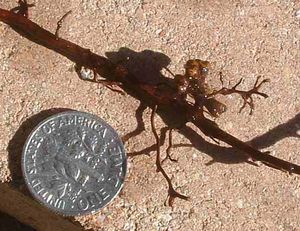
Organisms in symbiotic relationships with plant hosts are necessary for the health and survival of certain plants. They assist in creating and transporting certain root hormones, controlling pathogens and nematodes, root exploration, water retention, mineral uptake, and resource sharing. Frankia specifically fixes nitrogen in the air and produces molecules that other plants can use.

Frankia has symbiotic relationships with numerous dicot plants and is said to be responsible for 15% of the biologically fixed nitrogen in the world. One type of symbiotic relationship including plant, mycorrhiza, and Frankia is called a tripartite relationship and is a complex, multi-layered community of organisms that protect and support each other. Other symbiotic relationships include Frankia, one or multiple plants, and other bacteria. Frankia alni's specific role in these relationships is to infect the roots of plants: it deforms root hairs of its plant host by going into the cortical cells and causing the formation of nodules. Vegetative hyphae colonize the nodules and then differentiate into diazovesicles. (These structures can be seen on the bottom right-hand picture.) Diazovesicles are the thick-walled (containing hopanoids), spherical cells in which reductive nitrogen fixation occurs.
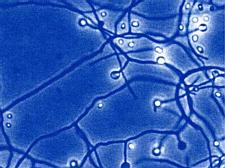
References
Genoscope: Frankia alni: A symbiotic nitrogen-fixing actinobacterium
Las Pilitas Nursery: Frankia is an actinomycete bacteria
Eberhard Karls University Tubingen: The Biosynthesis and Function of Hopanoid Lipids
